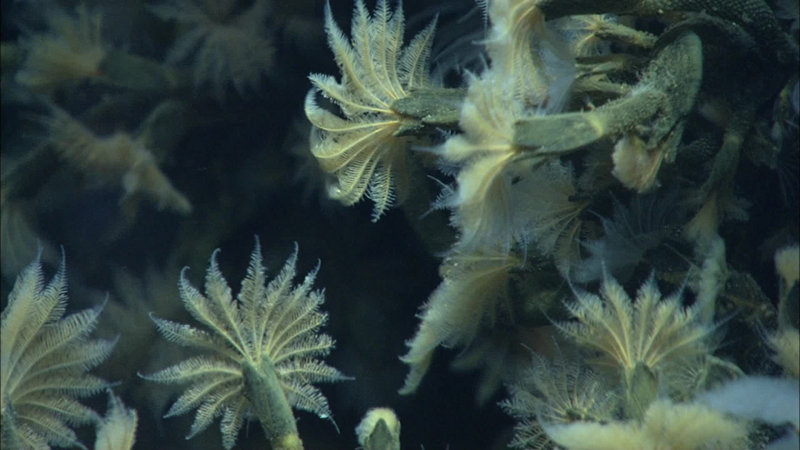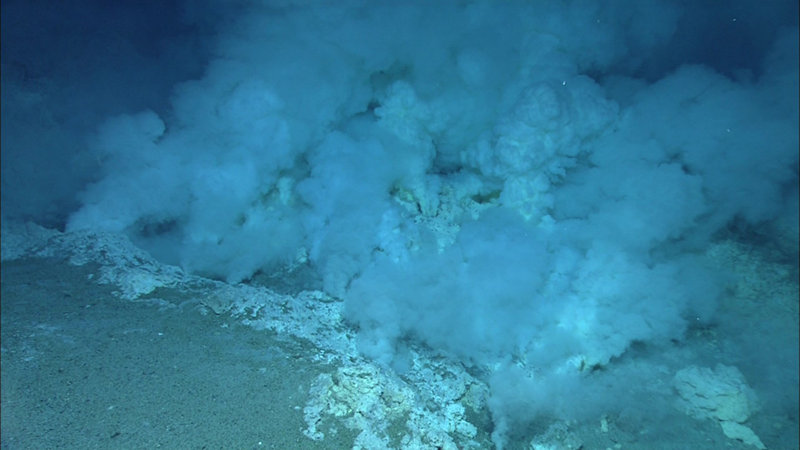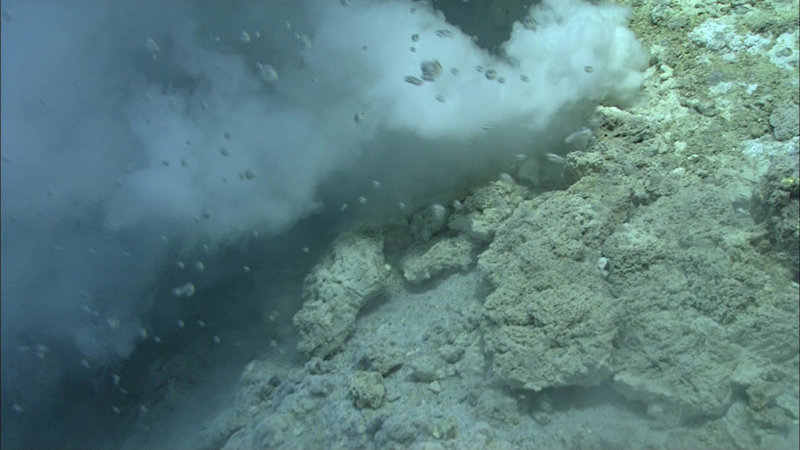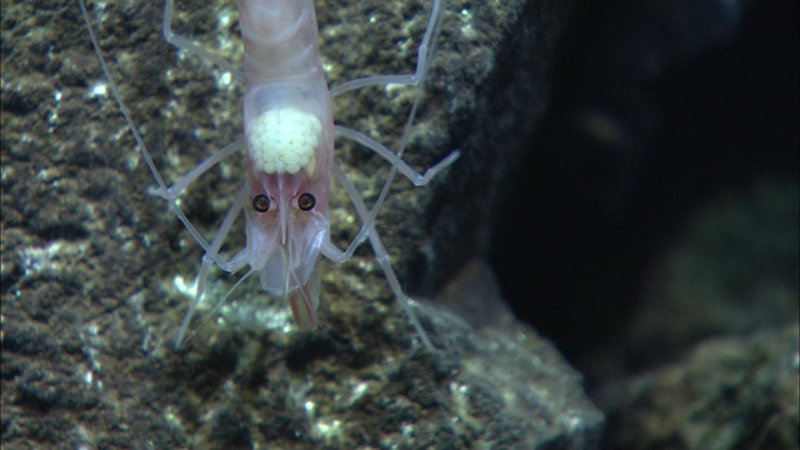
By Joe Resing, Senior Research Scientist - JISAO University of Washington, NOAA PMEL
September 22, 2012

Stalked barnacles on chimneys at Mata Fitu. Image courtesy of MARUM, University of Bremen and NOAA-Pacific Marine Environmental Laboratory. Download larger version (jpg, 330 KB).
We visited both the deepest and shallowest volcanoes of our expedition on these two dives. At Mata Fitu we were at 2600m depth, approximately 1.5 miles deep in the ocean, while at Niua North we were at 700m depth, less than a half a mile deep. There are much shallower volcanoes along the Tafua/Tonga Arc, but these are too dangerous to approach without great care. Interestingly, both of these volcanoes don’t appear on the map as the most obvious candidates for recent volcanic and hydrothermal activity due to their shapes. Mata Fitu appears to be split down the middle by a large fault created by movement of the ocean crust, while Niua North is an arc volcano that has forced its way up through much older crust. While Niua is on the arc, Mata Fitu is located in a smaller depression within the Northeast Lau Basin; it does not appear to be an arc volcano and it does not appear to be a backarc spreading center volcano. We currently are testing the concept of calling it a reararc volcano, because it is behind the arc, but in front of the backarc.

Some chimneys at Mata Fitu looked like Christmas trees. Image courtesy of MARUM, University of Bremen and NOAA-Pacific Marine Environmental Laboratory. Download larger version (jpg, 380 KB).
Even more striking than the differences in geological settings were the observations that we made when we arrived on the seafloor. Mata Fitu exhibited a stunning display of high temperature hydrothermal activity, with pagoda-shaped chimneys everywhere. Some of them were coated in stalked barnacles and looked like Christmas trees, and when we stirred up the white sediments, it looked like it was snowing. Niua North, on the other hand, had no chimneys. Instead it had jets of sulfur shooting out from many holes in the sediment-covered seafloor. The sulfur rose up like smoke, often greatly reducing visibility. When the sediments were disturbed, carbon dioxide was released into the water column as small droplets of liquid that rose up slowly above the remotely operated vehicle. Although both sites hosted biological activity, there were great differences between them. At Mata Fitu, there were stalked barnacle-covered chimneys, large snails, scale worms, shrimp and crabs. Niua North, on the other hand, was inhabited by shrimp with microbial mat in its sulfur pits; a mussel filled summit was also observed with a few crabs and even fewer snails.

Jets of sulfur shooting out from holes in the sediment-covered seafloor at Niua North. Image courtesy of MARUM, University of Bremen and NOAA-Pacific Marine Environmental Laboratory. Download larger version (jpg, 596 KB).
These two sites were as different as any two explored on our voyage of discovery. They emphasize the importance of visiting all the active sites in this region. Not only was our expedition too short to allow us to do so, but our night watch discovered three new active volcanic areas using our remote CTD technology. There is clearly more exciting exploration to be done in this region.

Carbon dioxide released into the water column as small droplets of liquid at Niua North. Image courtesy of MARUM, University of Bremen and NOAA-Pacific Marine Environmental Laboratory. Download larger version (jpg, 718 KB).

A gravid (with eggs) shrimp at Niua North. Image courtesy of MARUM, University of Bremen and NOAA-Pacific Marine Environmental Laboratory. Download larger version (jpg, 767 KB).